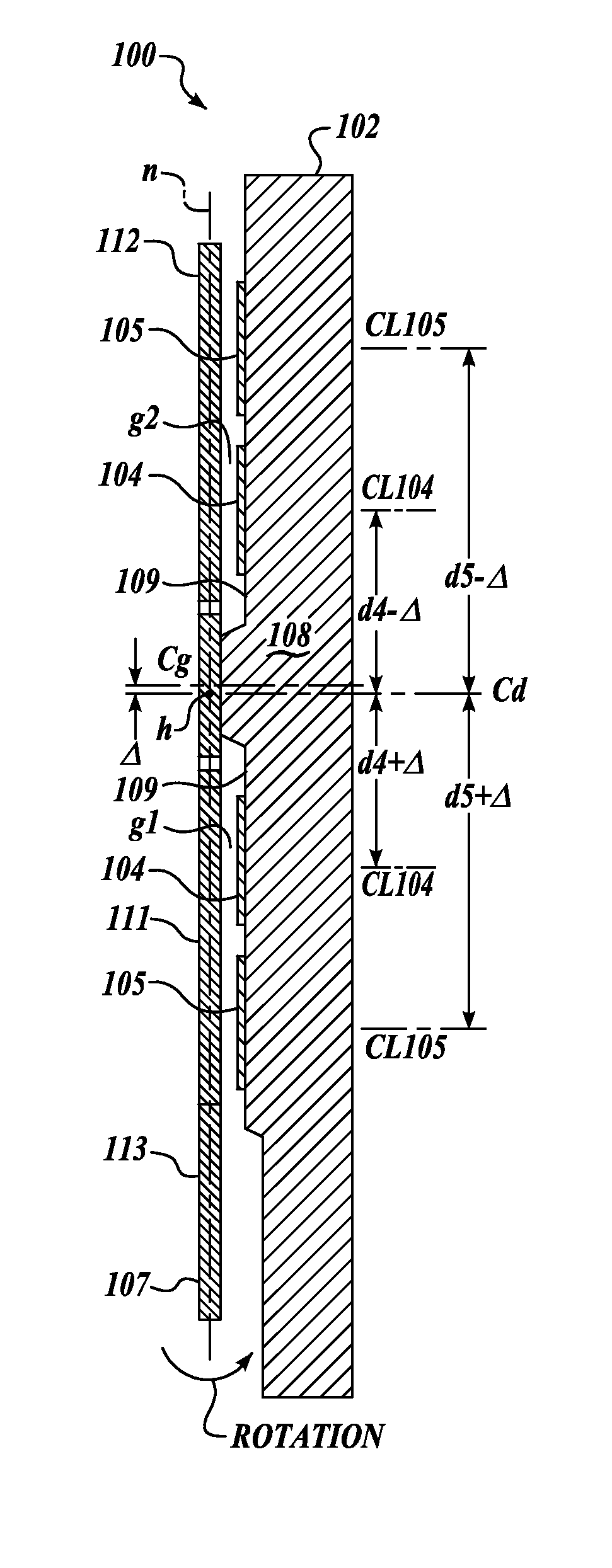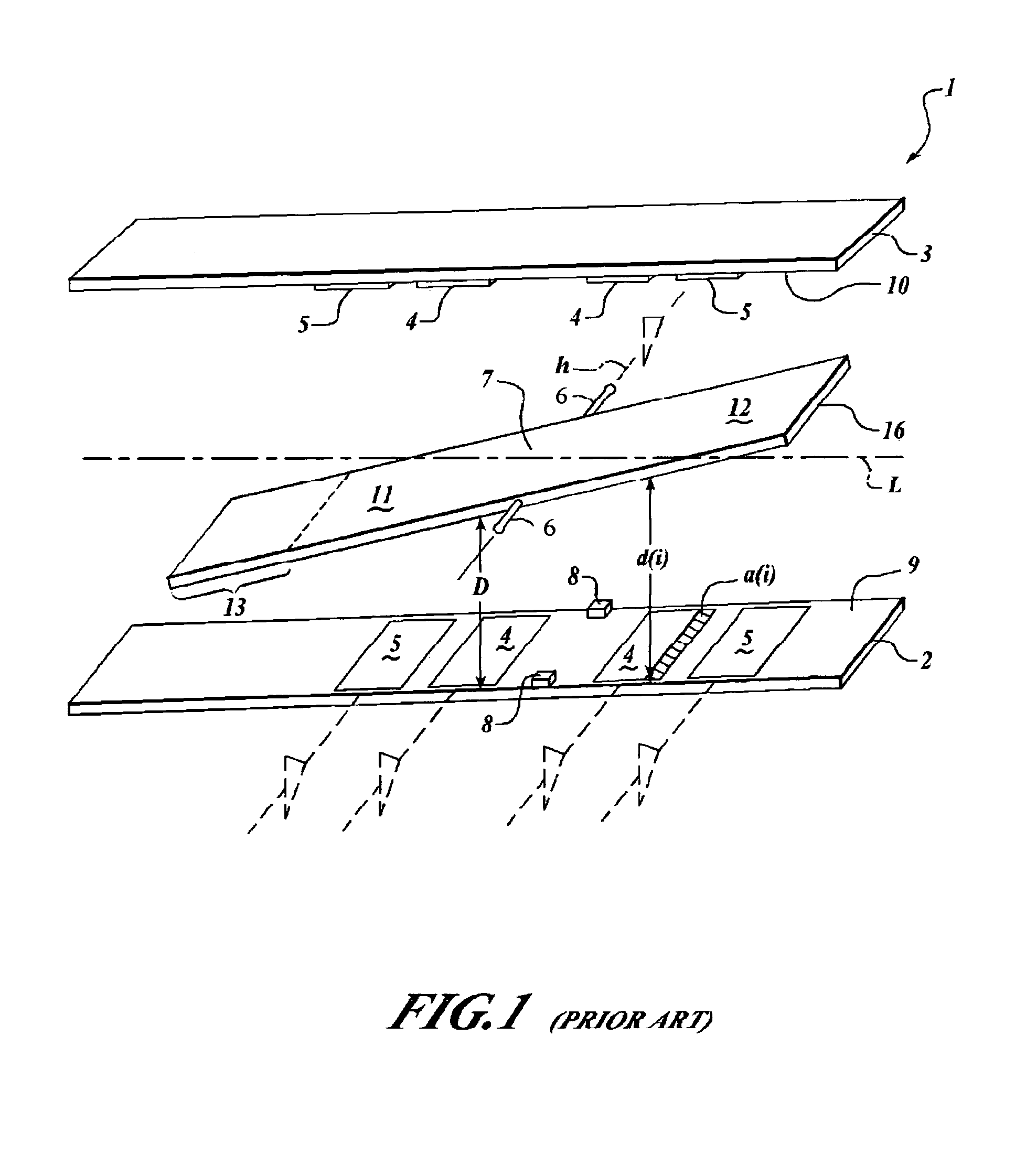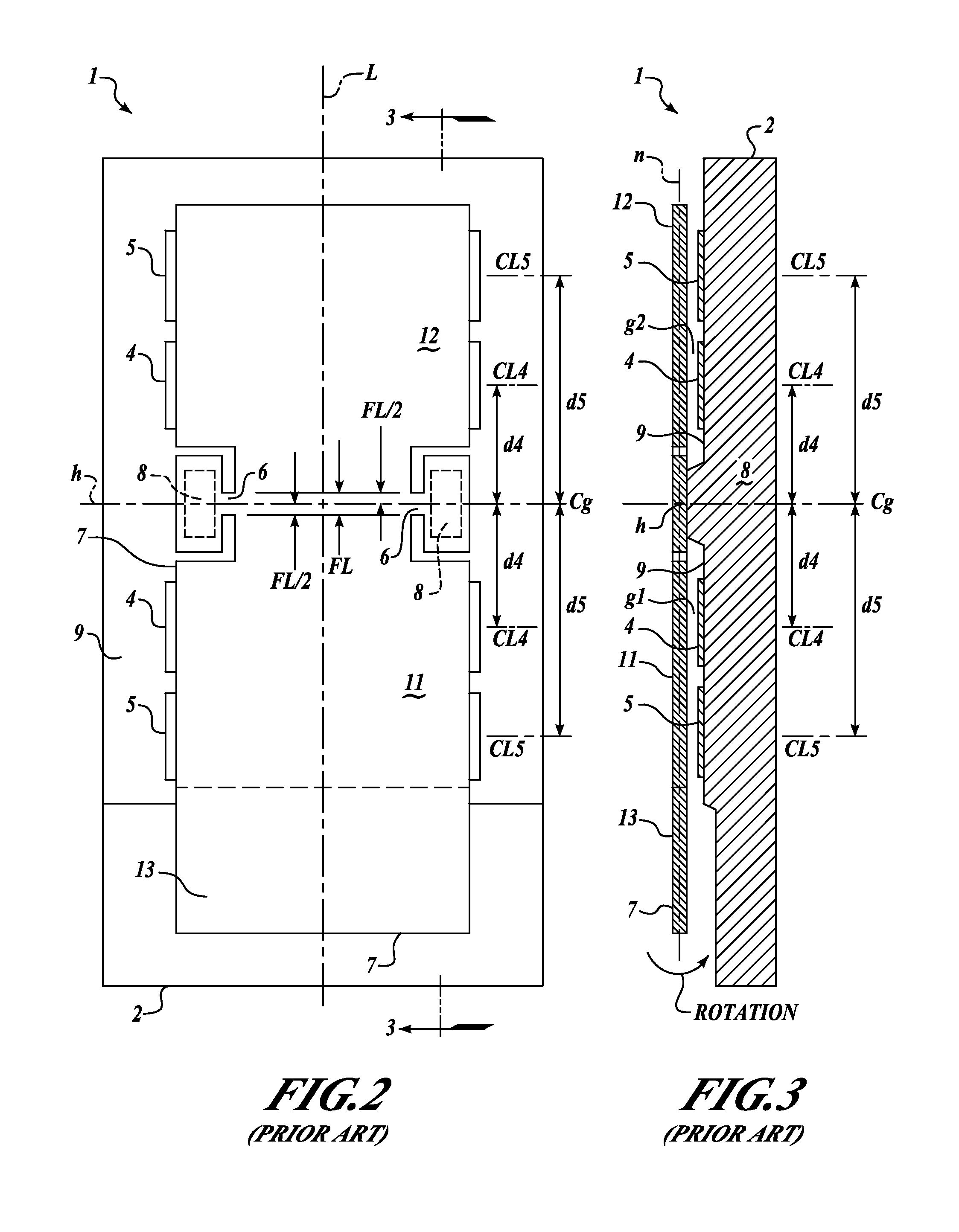Dynamically balanced capacitive pick-off accelerometer
a capacitive pick-off and accelerometer technology, applied in the direction of speed/acceleration/shock measurement, variable capacitor structural combination, instruments, etc., can solve the problem of imposing significant obstacles on the design of micromachined accelerometers, the optimum linearity of the accelerometer is less than the optimal, and the non-monotonic response is not ideal, so as to reduce the nonlinearity effect, improve the accuracy of device mathematical models, and reduce the effect of nonlinearity
- Summary
- Abstract
- Description
- Claims
- Application Information
AI Technical Summary
Benefits of technology
Problems solved by technology
Method used
Image
Examples
Embodiment Construction
[0044]In the Figures, like numerals indicate like elements.
[0045]The present invention embodied as a capacitive acceleration-sensing device of either the mid-pendulum hinged or “teeter-totter” type or the cantilevered “bending beam” type both fabricated using known Micro-Electro-Mechanical System (MEMS) or High aspect ratio MEMS (HIMEMS) technology and having effective portions of one or more excitation and feedback electrodes positioned relative to a pendulous acceleration sensing element as a function of a fulcrum or hinge axis h that is located at a dynamic centerline Cd of a flexure from which the acceleration sensing element is pendulously suspended, where the dynamic centerline Cd is at the center of an effective bending portion of the deflected flexure as measured relative to an undeflected neutral axis n of the flexure. The dynamic centerline Cd is shifted relative to the geometric centerline Cg of the relaxed or undeflected flexure.
[0046]Accordingly, as illustrated in the F...
PUM
 Login to View More
Login to View More Abstract
Description
Claims
Application Information
 Login to View More
Login to View More - R&D
- Intellectual Property
- Life Sciences
- Materials
- Tech Scout
- Unparalleled Data Quality
- Higher Quality Content
- 60% Fewer Hallucinations
Browse by: Latest US Patents, China's latest patents, Technical Efficacy Thesaurus, Application Domain, Technology Topic, Popular Technical Reports.
© 2025 PatSnap. All rights reserved.Legal|Privacy policy|Modern Slavery Act Transparency Statement|Sitemap|About US| Contact US: help@patsnap.com



